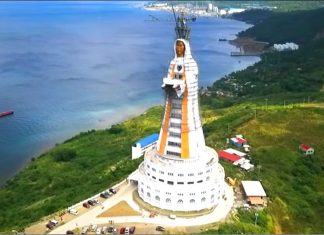
The Philippines is now the most improved country in Southeast Asia when it comes to Internet connection, clocking 5 times faster fixed broadband download speeds according to a recent infographic released by Yugatech using the latest Ookla data.
The new infographic is a welcome update to previous infographics portraying the country as Asia’s laggard. Based on the 2018 report by Ookla, the average fixed broadband download speed in the Philippines is 5 times faster than in 2014.

According to Speedtest Global Index Report by Ookla for April 2018, fixed broadband download speeds have increased dramatically by 403% to 17.62Mbps as of April 2018, from 3.5Mbps in 2014. The country is followed by Malaysia with a 391% improvement.
For mobile, average download speeds in the Philippines continued to improve from May 2017 to April 2018, according to a Yugatech report citing an Open Signal data.
Globe was able to retain its position of having the widest 4G availability as its users were able to find its 4G connections 67.5% of the time, the report read.
“These consistent reports from Ookla and other crowd sourcing speed tests showed that our high network investments have started to pay off. We were able to improve our internet services by efficiently using our spectrum assets and improving our network continuously,” Joel Agustin, Globe SVP for Network Technology Group, said in a statement.
Globe Telecom is allotting $850 million to $900 million every year until 2020 as capital expenditures (capex), in a bid to continuously upgrade its network for its fast-growing data business.
In the first 3 months of 2018, Globe already spent around P6.6 billion to remarkably expand its network and support the growing subscriber base and demand for data.
In terms of wired broadband facilities, Globe was able to deploy fiber broadband in 12 cities in Metro Manila as well as in 19 provinces nationwide. Majority of the company’s fiber build are located in Quezon City, Sta. Rosa and Calamba in Laguna as well as in Cebu and Davao.
Globe continues to deploy VDSL and now includes 16 cities in Metro Manila and in 18 areas that include Bulacan, Cavite, Baguio, Cavite, Cebu and Davao City. VDSL technology provides high-speed Broadband service up to 200 Mbps using existing copper footprint.
Agustin said that the total deployment using various broadband technologies reached more than 1 million lines since 2016. The company’s bid to deploy 2 million broadband lines by 2020 is expected to redefine home broadband experience for Filipinos amid growing customer demand for bandwidth-intensive multimedia content.
Using the 2600 MHz, Globe also fired up almost 200 massive MIMO sites, enabling a mobile network to multiply the capacity of a wireless connection without requiring more antennas.
Globe continues to be aggressive in expanding its LTE coverage across the country by deploying additional 934 LTE sites using the 700MHz, 2600 MHz and 1800 MHz frequencies in the first quarter of the year including Jolo, Tawi-Tawi, and Batanes. ###










